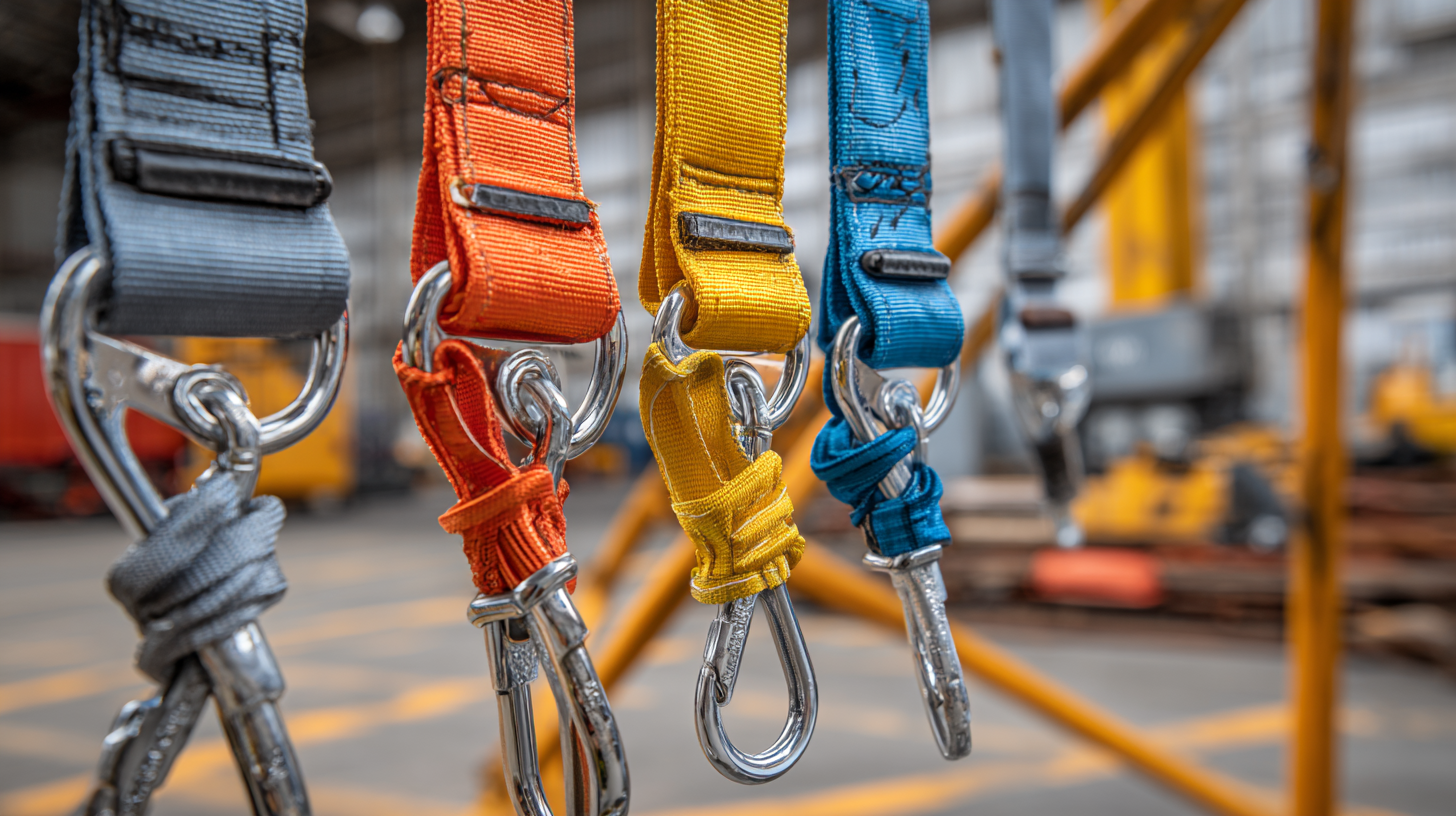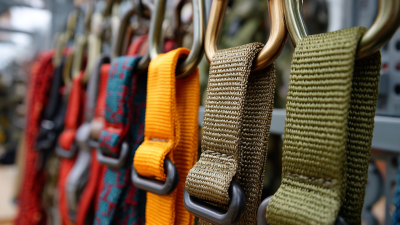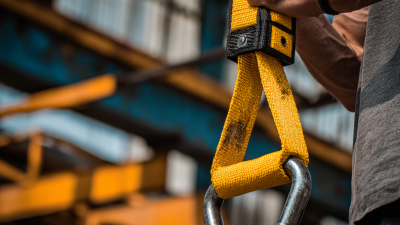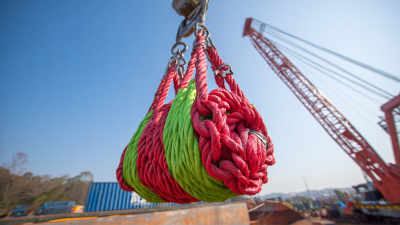In the world of lifting and rigging, the importance of selecting the right webbing sling cannot be overstated. As industries continue to prioritize safety and efficiency, the demand for high-quality webbing slings has surged. According to the International Institute of Welding, approximately 80% of lifting accidents are attributed to improper rigging practices, making the choice of lifting equipment critical. Webbing slings, known for their versatility and strength, play an integral role in mitigating these risks while ensuring the safety of personnel and equipment alike.

The global market for lifting slings, including webbing slings, is projected to reach $1.5 billion by 2027, growing at a CAGR of 4.5%. This growth underscores the increasing recognition of webbing slings in various industries, particularly in construction, manufacturing, and shipping. Key factors driving this trend include their lightweight nature, ease of use, and the ability to lift heavy loads without damaging delicate surfaces, which appeals to a wide range of applications.
As users navigate the complexities of selecting the appropriate webbing sling, understanding the various types and their specifications becomes essential. This guide aims to unlock the safety potential of webbing slings by providing insights into the critical factors to consider, ensuring that organizations can make informed decisions that foster a safe working environment.
Webbing slings are essential tools in lifting and securing loads, and understanding their various types is crucial for safe and effective usage. The most common types of webbing slings include flat slings, round slings, and endless slings, each designed for specific applications. Flat slings offer versatility and are ideal for light to medium lifting tasks, while round slings are constructed to handle heavier loads and provide greater flexibility. Endless slings significantly reduce wear since they can be used from any angle, making them a practical choice for unpredictable lifting scenarios.
In addition to these types, it's important to consider the material of the webbing sling. Polyester slings are prevalent due to their strength and low stretch, making them suitable for most lifting applications, whereas nylon slings offer greater elasticity, which can absorb shock loads better. When choosing the right webbing sling, users should also take into account the load capacity, environment (such as exposure to chemicals or extreme temperatures), and safety factors to ensure maximum efficiency and safety during lifting operations. Understanding these different aspects helps users make informed decisions that enhance safety and performance in their lifting tasks.
When selecting a webbing sling, several key factors must be considered to ensure safety and efficacy in lifting operations. The first critical factor is the sling's load capacity, which is specified in the manufacturer's datasheet. According to the Occupational Safety and Health Administration (OSHA), slings must be capable of supporting at least the weight of the load they will carry, with a safety factor of at least 5:1 for non-rated slings. This means that if the maximum load is 1,000 pounds, the sling should be able to handle at least 5,000 pounds to ensure safety during usage.
Another important consideration is the type of material used in the webbing. Polyester is commonly utilized due to its high strength-to-weight ratio and resistance to UV degradation, which is crucial for outdoor applications. Data from the European Federation of Materials Handling and Storage (FEM) indicates that polyester webbing slings can maintain approximately 90% of their original strength even after extended exposure to sunlight. Additionally, users should assess sling width and length, as these dimensions can influence both the distribution of load and the ease of handling. According to industry standards, wider slings provide better load distribution, reducing the risk of load damage and increasing overall stability during lifting operations.

When it comes to selecting the right webbing sling, understanding the materials used is paramount for ensuring both durability and safety. High-quality webbing slings are typically made from materials such as polyester, nylon, and polypropylene. According to a report from the Occupational Safety and Health Administration (OSHA), polyester is favored for its resistance to UV rays and moisture, making it ideal for outdoor use. Additionally, it exhibits minimal stretch, which ensures stability during lifting operations.
Nylon slings, while offering excellent shock absorption and elasticity, are more vulnerable to degradation from ultraviolet exposure and chemicals. Therefore, they should be used in applications where they will be protected from such elements. Polypropylene slings, on the other hand, are lightweight and resistant to water, yet they don't have the same load capacities as polyester or nylon. Understanding these differences will help you make informed choices suitable for your lifting needs.
**Tips:** Always inspect your webbing slings before use for signs of wear, such as fraying or cuts. Ensure that the sling's working load limit (WLL) meets or exceeds the weight of your load. Furthermore, in environments where exposure to chemicals or extreme temperatures is possible, opting for specially formulated materials can significantly enhance safety and longevity.
Proper inspection and maintenance of webbing slings are crucial to ensure their longevity and effectiveness in lifting operations. Before each use, it is essential to examine the sling for any signs of wear, such as fraying, cuts, or discoloration. Additionally, check for any embedded debris that could compromise the material’s integrity. A thorough inspection should include examining the stitching and ensuring that the label, which provides important load capacity and safety information, is intact and legible. If any irregularities are detected, it is vital to replace the sling immediately to avoid potential accidents.
Regular maintenance practices also play a significant role in extending the lifespan of webbing slings. Cleaning them according to the manufacturer's guidelines is important, as accumulation of dirt, oils, or chemicals can weaken the fiber. For example, some webbing slings can be washed in a mild detergent and air-dried, but always consult the specific care instructions. Storing slings in a cool, dry place away from direct sunlight and extreme conditions is essential to prevent degradation. By following these inspection and maintenance protocols, users can ensure that their webbing slings remain safe and reliable tools for their lifting needs.
When selecting the right webbing sling for your load, understanding load capacity and rigging best practices is crucial. According to the "Industrial Safety and Health Management" report by the National Safety Council, improper rigging can result in accidents that lead to significant injuries and financial losses. Therefore, it is essential to choose webbing slings rated for the maximum load you plan to lift. The American Society of Mechanical Engineers (ASME) recommends a safety factor of at least 5:1 for webbing slings, meaning that the sling should have a maximum load rating five times greater than the weight you intend to lift.

Rigging techniques also play an integral role in safely lifting loads with webbing slings. The "Guidelines for the Safe Use of Webbing Slings" published by the Occupational Safety and Health Administration (OSHA) emphasizes the importance of using correct rigging methods, such as the basket hitch or double wrap, to distribute weight and minimize strain on the sling. It is recommended to inspect slings before every use for signs of wear, cuts, or abrasions. By adhering to these best practices, operators can help ensure the safety and efficiency of their lifting operations while significantly reducing the risk of failure associated with improperly rated or rigged webbing slings.






